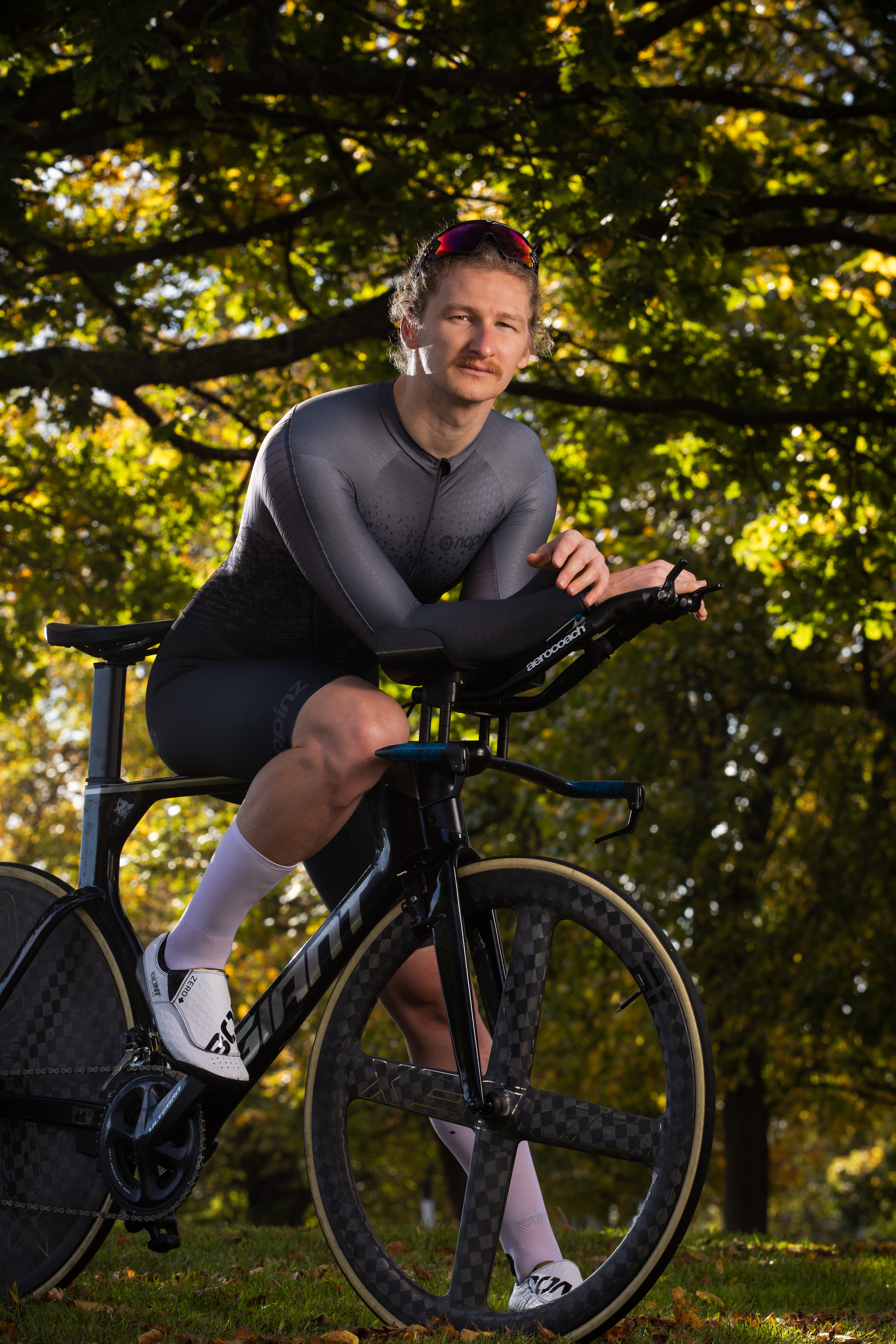'Think like a time triallist': How to increase your average speed on a road bike
Inspired by recent developments in road bike time trialling, we go in search of free speed for everyday riding
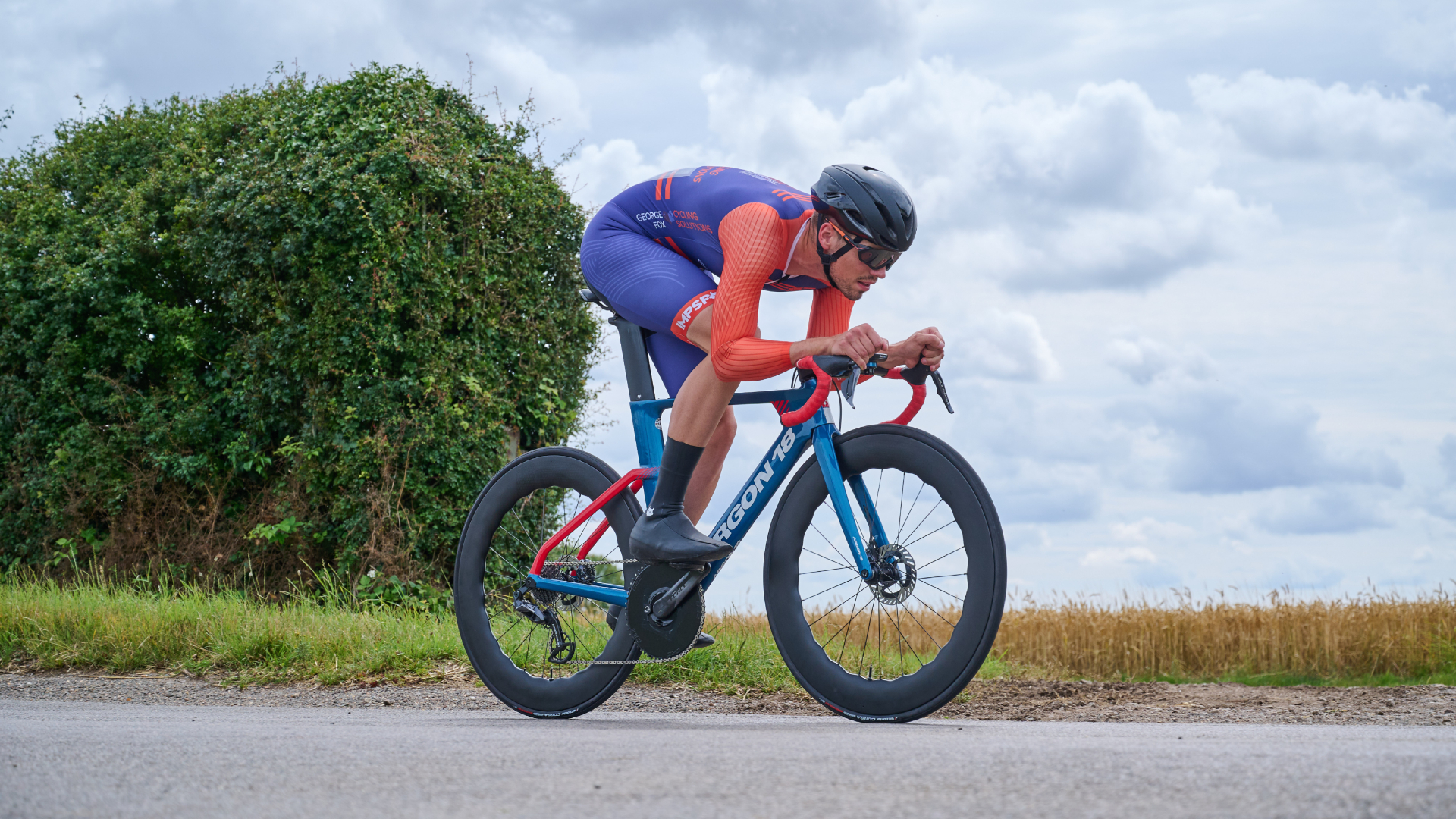
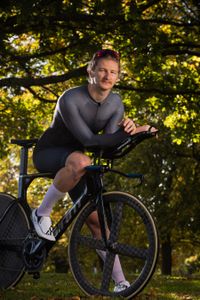
Earlier this year, British time triallist George Fox set a new TT record, beating an unofficial mark that had gone unchallenged for three-and-a-half decades. Fox, a coach and bike fitter (gfoxcycling.co.uk) based in Northamptonshire, claimed the fastest ever 10-mile time trial on a road bike, 18:41 – that’s 51kph or nearly 32mph – seven seconds faster than British icon Colin Sturgess’s time from back in 1988. While the achievements of these two time trialling heroes may seem beyond the dreams of us mere mortals, there is in fact a lot to be learned from these remarkable rides, most notably in the potential for aero gains we can all exploit in our own riding – not just in races but every day.
The road bike aero optimisation of Fox and other time trial specialists can be applied to our own riding, to go faster whether in a sportive, weekly club run or even just cycling to work. While at the highest level of cycling, getting maximally aero involves sports science, expensive trips to the wind tunnel and even more expensive kit, for us amateurs there is plenty we can do at home to reduce drag on our road bikes – without spending a penny. In search of these free gains, I spoke to aero experts Xavier Disley and George Fox, as well as former world champion Colin Sturgess, to discover the best ways for the average cyclist to optimize their ride.
From knowing your environment to adjusting your bike fit, here are the four best ways to improve your road bike aerodynamics, for free.
1. Think like a time triallist
“Think like a time triallist,” said Fox when I asked for his best tips for amateur riders looking to improve their road bike aerodynamics. This sentiment hits on the first key step in optimising your aero position, and that’s thinking about aerodynamics. Before diving into the bottomless money-pit of buying your way to aero, first it’s important to understand the benefits of aerodynamics and how air resistance limits your speed.
“Improving your aerodynamics is important for everyone riding outside, unless all you do is ride up hills and never down them,” said Xavier Disley, founder of component brand Aerocoach and champion of road bike TT events. “You don’t have to be travelling very fast, either. Remember that the relative airspeed over a rider is much higher when you’re riding into a headwind, so if you’re at 20-22kph, that might not seem very fast, but into a strong headwind it’s similar as riding at a much higher speed, where we know aerodynamics matters.”
So what is the first step towards thinking like a time triallist? Once you’ve started thinking about relative airspeed, position and your aerodynamics, it quickly becomes clear that different approaches are needed for different situations, leading us to our first key tip from the experts: know the conditions.
Whether it’s a weekly group ride, a long distance sportive, or even a short crit at the local circuit, the varied terrain and wind direction can all inform how you use your aero skills.
The latest race content, interviews, features, reviews and expert buying guides, direct to your inbox!
For example, as previously explained by Disley, the higher your speed, the more important aerodynamics become, so staying aero on a descent could offer you an opportunity to rest while less aero efficient competitors push hard to stay in contact.
Meanwhile, hiding in the bunch may present an opportunity to ease off the aero position, ready to deploy it in a high speed effort of ultimate aero efficiency in an upcoming crosswind section up ahead. “When you’re riding in a group, you can afford to sit up a bit more in the draft if you’re not working at maximal effort, and then move into your aero position when you hit the front,” said Disley.
While knowing the conditions may sound like the wheelhouse of sports directors and elite coaches, fortunately there are plenty of cycling apps out there offering amateur riders an insight into the conditions on their rides. Strava is able to calculate altitude gain on pre-established routes, letting you plan ahead for those flat and fast sections, while myWindsock is a fan favourite among the TT crowd, offering invaluable insights into wind speed and direction – often the making (or unmaking) of a strong TT ride. Simply checking the wind speed and direction on a weather app and relating it to your route on a map provides a useful rough guide to how the wind will affect you. By adjusting your thinking and entering the mindset of a time triallist, you’ll be well on your way to aero nirvana.
2. Get low
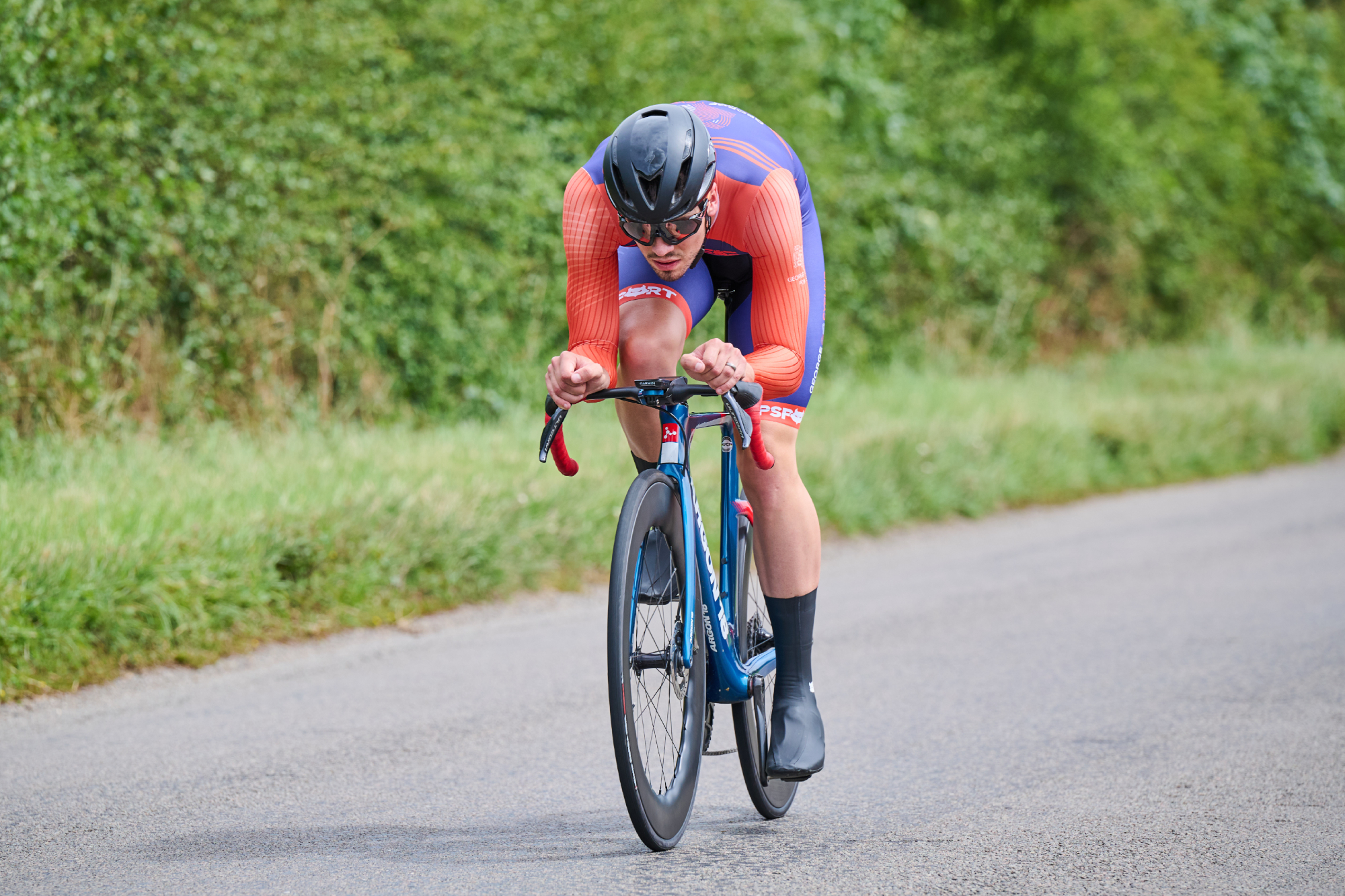
In search of my aero gains, I employed the help of a true icon, the man who set that 1988 comp record, Colin Sturgess. He is a former world champion on the track, and now runs his own coaching company (championcyclingservices on Instagram). Sturgess set that 1988 riding a round-tubed 753 steel Condor road bike – making his 18:48 all the more mind-blowing. At the time, it wasn’t just the road bike record, it was the fastest 10 miles anyone had ridden on any bicycle.
Eighties cycling aerodynamics were far from the science-meets-art that they are today, but what’s fascinating is that even then Sturgess instinctively understood many of the modern axioms. “The principle of trying to lower and narrow that front end – there’s always been that inherent knowledge,” Sturgess said. “There are certain principles that have stayed the same, like reducing that frontal area as much as possible without impinging on other parts.”
It was effectively that same philosophy that took George Fox to his time of 18:41 earlier this year. “There are very few differences between a fast road bike and fast time trial bike position,” said Fox. “TT riders have been developing positions for years now, so we can follow the science with things like shoulders and head positions; nothing is different in that respect. My ultimate aim was always to make it so that my arm position was the only difference between my TT and road bike positions.”
While time triallists have the benefit of aero (AK A ‘tri’) bars to support them in the long and low position, those trying to get aero on a road bike instead have to support their own weight, at least since most governing bodies have banned the controversial ‘puppy paws’ position..
Through his research, Disley has found that the angle of the underside of the torso has a good correlation with aerodynamic drag. Lowering the torso angle as much as possible (but not past horizontal) will help you maintain a low profile. After that, narrowing the position of the arms and hands will also make a difference, achieved most simply by keeping your elbows closer together rather than letting them splay out.
The consensus is that, on modern road bikes, the most aerodynamic position is for the rider to keep their hands on the hoods, forearms parallel to the ground, and the upper arm at 90-degrees to the forearm, with a horizontal torso. This reduces your frontal area and reduces your drag – but as anyone who has tried holding this position for more than 30 seconds will tell you, it hurts. Try maintaining it at your maximum 20-minute power. It’s a skill that requires some refinement, to say the least, which we’ll come onto shortly.
While riding on the drops may feel aero and be more comfortable, the science of aerodynamics has revealed that riding on the drops exposes more of your forearm to the wind, offering up more surface aero and increasing resistance. There is of course a trade-off here: you want to be fast, but you also want to be comfortable and, most importantly, safe. If riding with a low front end means staring straight down at the tarmac and missing potential hazards ahead, it’s not worth the risk.
3. Slam the stem
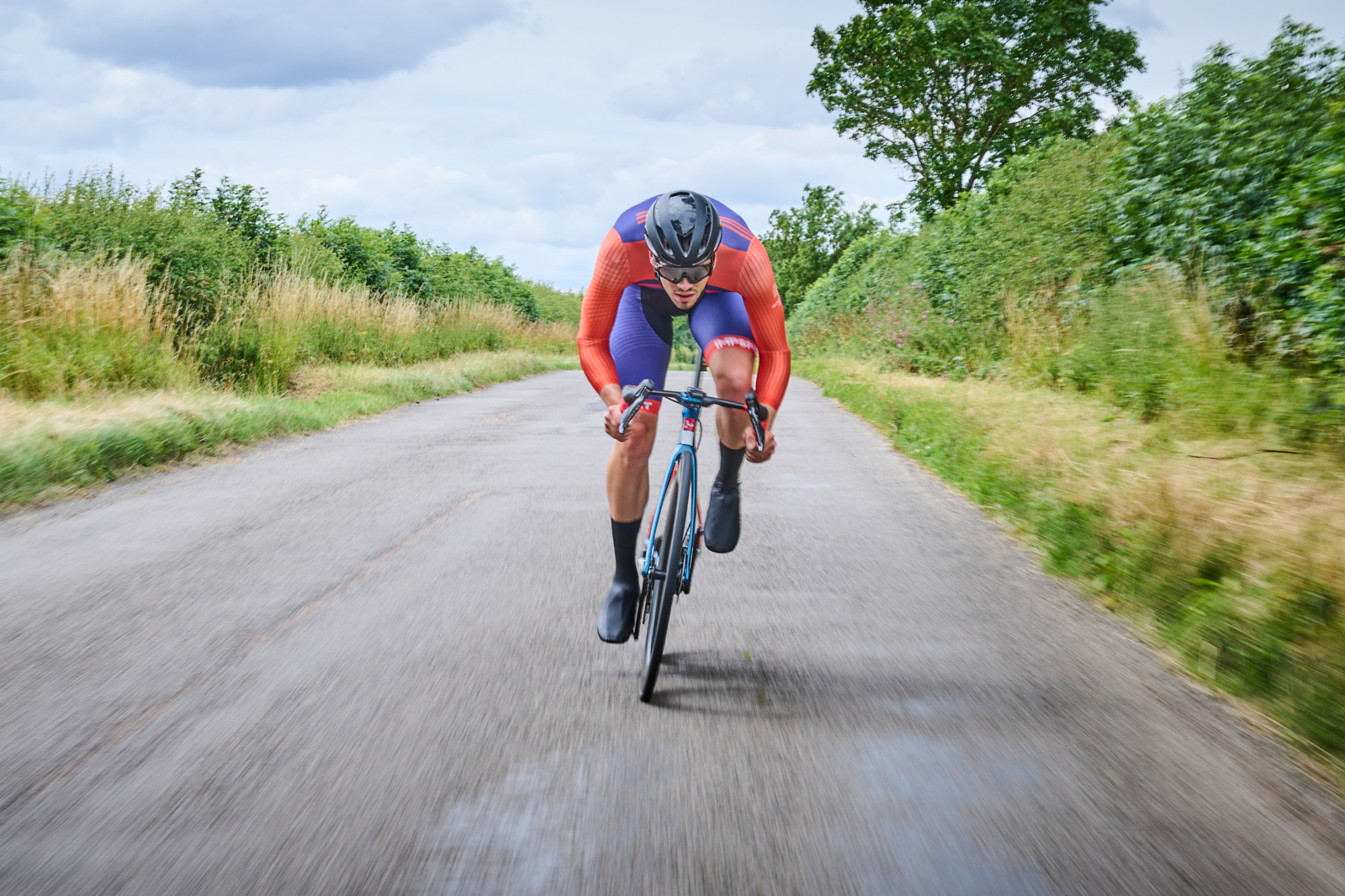
Having shifted your mentality and started experimenting with torso and forearm angle on the bike, you might start to feel there’s more that can be done, if only you could just get lower. Now is the opportunity to start exploring the small tweaks you can make to your bike to eke out a marginal advantage against your clubmates or rivals. “You may find that increasing your reach on the bike or lowering the stem makes a lower torso angle more achievable,” said Disley, “but you need to make sure that you’re still comfortable when not trying to hold the low position, such as when holding the tops for climbing.”
Free and easy options for experimenting with your bike set-up include increasing the saddle height to help lower the front end, removing stem spacers to lower the bars, and turning your hoods inward to reduce frontal drag. A helpful tip followed by time triallists on a budget is to set your bike up on a smart indoor trainer and film yourself from side-on, then compare your riding position after each small change. Again, safety and comfort are important considerations when adapting your bike set-up, so don’t compromise your ability to see dangers ahead or, when adjusting the hoods, your braking ability.
And finally, start small. Of course the temptation when implementing your new aero advantages is to dive in headfirst and gain as much speed as humanly possible in a short space of time. But you’ll quickly find that some of these tips, while free, are also quite difficult, so the key is to start small. “The best thing to do in terms of training is not to jump straight in at the deep end and try and hold a Tour de France breakaway specialist position from minute zero of your recovery ride all the way through to next week!” advised Disley. “Work on it in stages: try to understand when it’s important to stay aero and work on holding a breakaway position or slightly lower position in small segments of one to two minutes.”
Once mastered, you can begin to build it up. “Over time you’ll be able to hold it for stretches of 10-15 minutes at a time, which, when you’re on a training ride trying to beat your best time over a set route or in a group ride trying to keep the speed high, will make a huge difference.” Making these small changes over time allows your body and mind to adapt.
When it comes to holding the aero position, most riders benefit from some work off the bike. Strength and flexibility are key when it comes to maintaining an aerodynamic position. Here you can find a 10 minute daily routine to boost your flexibility and endurance in order to help you hold an aero position comfortably.
Anyone who has tried to stay low on the hoods will be familiar with the burning triceps and sore neck that ensue. “Off the bike, the one thing I would say is that to hold an aero position you do need to be quite flexible, and you do need to be quite strong,” said Sturgess. “Work on your glutes and on the upper half being limber, being able to hold the position, being flexible. All of that can be done on a yoga mat in your house or wherever you want.” As George Fox once told me about road bike TTs: ‘it’s basically holding a plank for 20 minutes.’
With these new skills to bolster your arsenal, you can now hope to gain additional speed without needing to dive into the arms race of buying aerodynamic components. There is of course always more speed available to buy off the shelf, from expensive skinsuits to aerodynamic wheels, but the key message is that money isn’t everything.
Instead, discipline might be your most valuable asset – thinking like a time triallist, training to be aero, and holding that uncomfortable aero position all require varied types of commitment. If you master these key – and free – aero gains, and then begin to explore the many upgrades, you might just find those PBs start to tumble faster than you expect.
George Fox's bike set up

The recent history of the 10-mile road bike record is a fascinating story that starts with the phenomenal achievement of Colin Sturgess in 1988. Sturgess set the time of 18.48, which at the time was not just the fastest road bike record, but the fastest competition time on any type of bike. As TT bikes became popular from the 1990s onwards, the overall 10-mile record tumbled many times over the next 25 years – until Marcin Białobłocki set his blistering 16:35 in 2016, which still stands today.
All the while, Sturgess’s mark still stood as the fastest road bike 10 – until George Fox turned his attention to the effort in 2019. In May that year, Fox smashed through the 20-minute barrier on a road bike with a time of 19.19, prompting him to set his eyes on the 1988 (unofficial) record.
After a few years of planning (and Covid interruptions), in May 2023 Fox set a new time on the F11/10 course near Tring in Hertfordshire – 18:41, seven seconds faster than the 35-year old record.
It’s worth noting that there is a slight difference between the Sturgess and Fox records. Sturgess’s was the outright 10-mile solo record, whereas Fox’s time was a new record within CTT’s road bike category – a small but important distinction.
Fox said: “It is really humbling [to break the record]. I’m proud of the process we went through to achieve it. I joke about the whole thing being a bad idea and a science experiment and at times it really felt that way. We’d try something, and it wouldn’t work at all, then we’d make a change based on another bad idea! The practice ride a month before was terrible and seriously worrying in terms of the prospect of breaking the record. But in the end it all came together: we broke the record on the first day of trying, using a set-up that was cheaper than my standard road bike so it all ends up being really satisfying to be honest!”
Fox used an Argon 18 E-17 time trial frame, adapted into a road bike (including drop bars). While this is entirely within CTT’s regulations for road bike time trials, some naysayers were critical. On this bike, his CdA is 0.22 and he averaged 382W. Fox’s record may have been just the starting point in a new wave of road bike records: just last month, HuubWattshop rider Alex Pritchard set a new record of 18:35, knocking six seconds off Fox’s time, using a BMC Timemachine 01 Road, with 60mm Hunt Aerodynamicist wheels and a 60t Pyramid Cycle Design chainring. For TT fans, this could be a very exciting time as riders explore the new limits of road bike aerodynamics.
The first version of this article was published in the print edition of Cycling Weekly. Subscribe online and get the magazine delivered direct to your door every week.
Alex Ballinger is editor of BikeBiz magazine, the leading publication for the UK cycle industry, and is the former digital news editor for CyclingWeekly.com. After gaining experience in local newsrooms, national newspapers and in digital journalism, Alex found his calling in cycling, first as a reporter, then as news editor responsible for Cycling Weekly's online news output, and now as the editor of BikeBiz. Since pro cycling first captured his heart during the 2010 Tour de France (specifically the Contador-Schleck battle) Alex covered three Tours de France, multiple editions of the Tour of Britain, and the World Championships, while both writing and video presenting for Cycling Weekly. He also specialises in fitness writing, often throwing himself into the deep end to help readers improve their own power numbers. Away from the desk, Alex can be found racing time trials, riding BMX and mountain bikes, or exploring off-road on his gravel bike. He’s also an avid gamer, and can usually be found buried in an eclectic selection of books.
